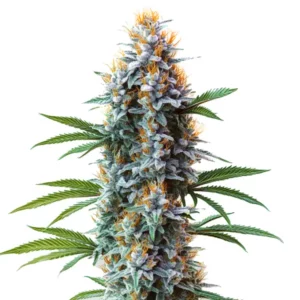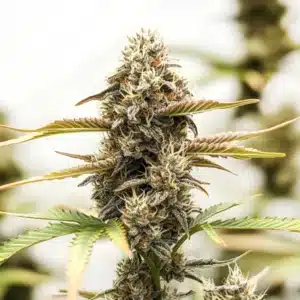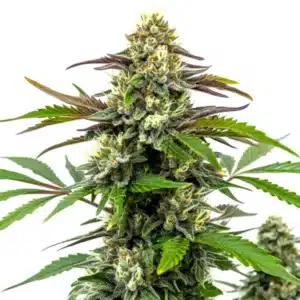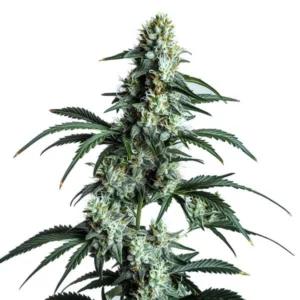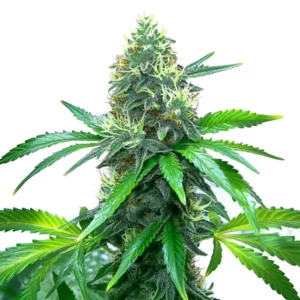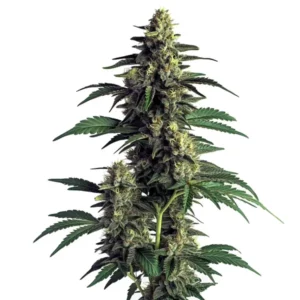
Optimizing Cannabinoid Output Using Enzymes
Growing cannabis is an art and science, a delicate balance of factors that influence the final product. One of the exciting advancements in cannabis cultivation is optimizing cannabinoid output using enzymes. This approach is transforming how growers enhance their yields, introducing enzyme-assisted cannabinoid synthesis optimization into the mainstream.
Think of enzymes as the unsung heroes in your garden, tiny proteins accelerating chemical reactions. They are crucial for maximizing cannabinoid yields through enzyme application, ensuring that every plant reaches its full potential. Whether you’re a novice or a seasoned grower, knowing these enzymatic pathways for cannabinoid output enhancement can make a significant difference.
Recommended Strains
Blue Amnesia Auto
|
|
THC | 17% - 18% (Medium) |
|
|
Type | Autoflowering |
|
|
Yield | Low |
|
|
Phenotype | 40% Indica / 60% Sativa |
Blue Cheese
|
|
THC | 16% - 20% (Medium) |
|
|
Type | Feminized |
|
|
Yield | High |
|
|
Phenotype | 80% Indica / 20% Sativa |
For instance, certain enzymes can boost the conversion processes within the plant, improving cannabinoid extraction using enzymes. By incorporating these enzymes into your growing regimen, you’re not just growing cannabis; you’re enhancing its genetic promise. Let’s delve deeper into how this works, using strains like Blue Dream, Gorilla Glue #4, and Northern Lights from Blimburn Seeds as examples.
Enzyme Technology in Cannabis Cultivation
Enzyme technology isn’t new, but its application in cannabis is groundbreaking. By optimizing cannabinoid production with enzyme technology, growers can fine-tune their cultivation processes. This method is akin to giving your plants a turbo boost, enabling them to perform at their peak.
Blue Dream, a beloved strain on Blimburn Seeds, benefits greatly from this approach. With its balanced genetics, enhancing its cannabinoid profile through enzyme technology can lead to more potent and flavorful harvests. It’s about unlocking the plant’s full potential, making every grow cycle more rewarding.
When considering enzyme technology, it’s essential to understand that this innovation doesn’t merely speed up existing processes; it also opens new avenues for plant development. By optimizing cannabinoid output using enzymes, growers can experiment with different strains to see how enzyme interactions can uniquely enhance each one’s characteristics. This not only increases productivity but also enriches the diversity of cannabinoid profiles available for various applications.
Furthermore, enzyme technology can be tailored to specific cultivation techniques, whether you are growing indoors, outdoors, or in a greenhouse. Each environment presents unique challenges and opportunities for enzyme use, allowing growers to refine their methods for better results. This adaptability makes enzyme technology a versatile tool in the quest for optimizing cannabinoid production with enzyme technology, ensuring that no matter the conditions, the plants can reach their full potential.
How Enzymes Work in Plants
Enzymes are catalysts, meaning they speed up reactions without being consumed. In cannabis, they facilitate the conversion of precursors into cannabinoids. This catalytic action is what makes enzyme-assisted cannabinoid synthesis optimization so effective.
Imagine your plant is a factory, and enzymes are the workers ensuring everything runs smoothly. They help synthesize cannabinoids like THC and CBD more efficiently, contributing to higher yields. For Gorilla Glue #4, known for its high THC content, enzymes can enhance its potency even further, making each bud more powerful.
Enzymes also play a critical role in maintaining the plant’s overall health by regulating various biochemical pathways. By improving cannabinoid extraction using enzymes, growers not only increase the concentration of desired compounds but also maintain the ecological balance within the plant. This balance is crucial for achieving stable and sustainable growth cycles, ultimately leading to consistent and reliable harvests.
Moreover, the function of enzymes extends beyond the plant itself, as they also influence the soil microbiome. By breaking down complex organic matter, enzymes improve soil fertility and structure, creating an ideal environment for plant roots to thrive. This symbiotic relationship between plant and soil is essential for optimizing cannabinoid output using enzymes, as it ensures that plants are well-nourished and capable of reaching their genetic potential.
Promos & Deals
Practical Application of Enzymes
Applying enzymes in cannabis cultivation doesn’t have to be complicated. There are various ways to introduce these beneficial proteins into your grow setup. One common method is through enzyme-rich fertilizers and soil amendments.
The Northern Lights strain, another favorite from Blimburn Seeds, can excel with enzyme application. These enzymes help plants absorb nutrients more efficiently, promoting vigorous growth. This means healthier plants and, ultimately, a more bountiful harvest.
Practical application also involves knowing the timing and dosage of enzyme introduction. By carefully scheduling enzyme applications, growers can match the enzymatic activity with the plant’s growth stages, ensuring that the maximum benefits are realized. This strategic approach allows for precise control over the cultivation process, enhancing the effectiveness of enzyme technology in achieving desired outcomes.
Additionally, combining enzymes with other sustainable practices can amplify their benefits. For instance, integrating enzymes with organic farming techniques can lead to a more holistic cultivation system that not only focuses on maximizing cannabinoid yields through enzyme application but also prioritizes environmental health and sustainability. This approach ensures that the production process is not only efficient but also responsible and eco-friendly.
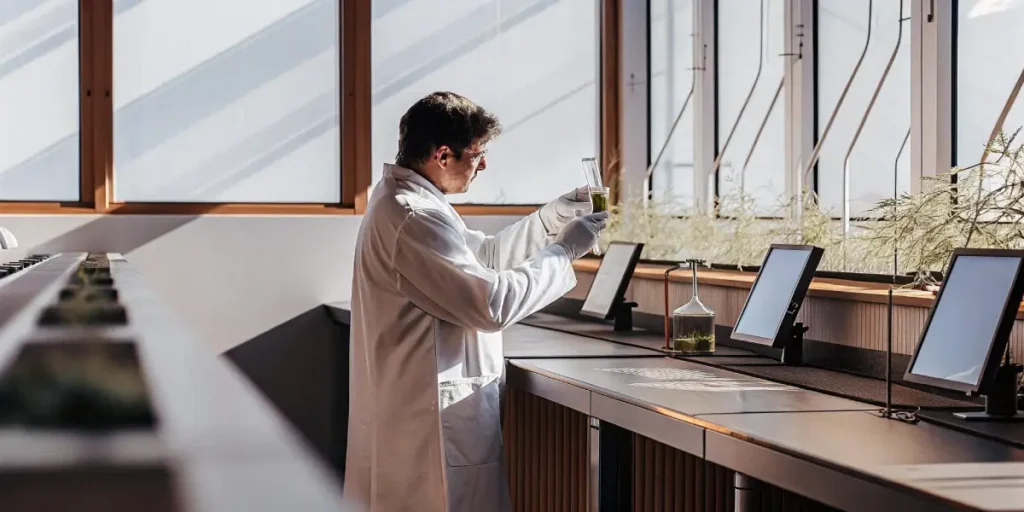
Choosing the Right Enzymes
Selecting the appropriate enzymes is crucial for success. Not all enzymes are created equal, and different types serve various purposes. It’s essential to choose ones that align with your specific cultivation goals.
For example, if you’re aiming to enhance cannabinoid production, look for enzymes that specifically target cannabinoid biosynthesis pathways. These will maximize your yield by optimizing cannabinoid output using enzymes tailored for this purpose.
Knowing the specific needs of your plants and the conditions of your growing environment can guide you in choosing the most effective enzymes. Consult with experts or conduct trials to determine which enzyme combinations work best for your particular setup. This empirical approach can lead to significant improvements in both potency and yield, as you tailor enzyme use to fit your unique cultivation strategy.
Besides to selecting enzymes based on their function, consider their source and quality. High-quality enzymes derived from reputable sources tend to be more effective and reliable. Opting for premium enzyme products can ensure that your plants receive the best possible care, leading to superior results in optimizing cannabinoid production with enzyme technology.
Real-Life Examples and Results
Real-world application of enzyme technology yields impressive results. Many growers report noticeable increases in both the quantity and quality of their harvests. This success isn’t just anecdotal; it’s backed by science and practical evidence.
Take, for instance, growers using enzymes with Gorilla Glue #4. They’ve observed denser buds and richer cannabinoid profiles, thanks to the efficient conversion processes facilitated by enzymes. It’s a testament to how improving cannabinoid extraction using enzymes can redefine your cultivation experience.
These real-life examples highlight the transformative potential of enzyme technology in cannabis cultivation. By documenting their experiences, growers contribute to a growing body of knowledge that helps refine and improve enzyme application techniques. This collective wisdom benefits the entire cultivation community, paving the way for more innovative and effective strategies in optimizing cannabinoid output using enzymes.
Sharing results and insights with fellow growers also encourages collaboration and experimentation. By exchanging information about enzyme use, growers can explore new methods and discover novel ways to enhance their cultivation practices. This spirit of innovation and cooperation is essential for driving progress in the field and achieving even greater success in maximizing cannabinoid yields through enzyme application.
Maximizing Your Harvest
Maximizing your harvest is the ultimate goal for any grower. Enzymes play a pivotal role in achieving this by enhancing the plant’s natural mechanisms. By adopting enzyme-assisted techniques, growers can see significant improvements in yield and potency.
For strains like Northern Lights, known for their resilience and high yield, enzymes can further enhance these traits. They help ensure that every plant reaches its genetic potential, offering you a more rewarding harvest.
Effective harvest maximization goes beyond simply increasing quantity; it also involves enhancing the quality of the final product. Enzymes contribute to this by improving the overall health and vitality of the plants, leading to more robust and flavorful buds. This dual focus on quality and quantity provides a comprehensive approach to optimizing cannabinoid output using enzymes, ensuring that the end product meets the highest standards.
Additionally, the benefits of enzyme use can extend beyond a single grow cycle. By consistently applying enzyme technology, growers can enhance soil health and plant resilience over time, creating an environment that supports sustainable and productive cultivation. This long-term perspective is key to achieving ongoing success in cannabis cultivation, allowing for continuous improvements and innovations in enzyme-assisted cannabinoid synthesis optimization.
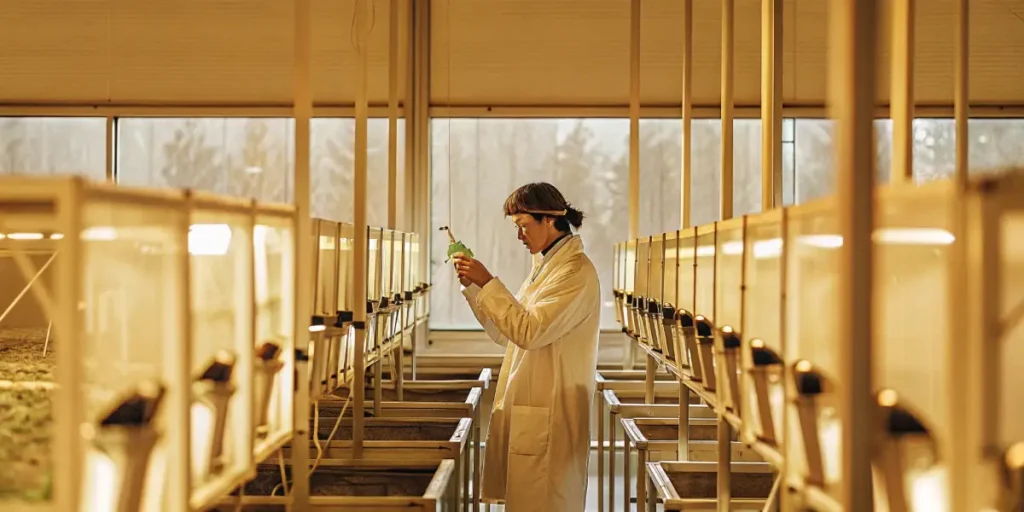
FAQs
What are the benefits of using enzymes in cannabis cultivation?
Enzymes offer several benefits in cannabis cultivation. They speed up chemical reactions in the plant, enhancing the conversion of precursors into cannabinoids. This means higher potency and more abundant yields. For example, using enzymes with strains like Blue Dream can result in more flavorful and powerful buds.
Additionally, enzymes improve nutrient uptake by breaking down complex compounds in the soil, making them more accessible to the plant. This leads to healthier growth and more robust plants. Overall, enzymes are a game-changer in optimizing cannabinoid output using enzymes, delivering tangible results.
Moreover, enzymes contribute to a more efficient use of resources by ensuring that plants receive the maximum benefit from available nutrients. This efficiency not only reduces waste but also minimizes the need for additional inputs, making enzyme use a cost-effective solution for enhancing cannabinoid production. This sustainable approach aligns with modern agricultural practices focused on reducing environmental impact while maximizing yields.
Enzyme technology also offers flexibility in cultivation practices, as it can be adapted to various growing systems, including hydroponics and traditional soil-based methods. This versatility allows growers to integrate enzymes into their existing setups seamlessly, optimizing cannabinoid production with enzyme technology regardless of the cultivation method employed.
How do I choose the right enzymes for my cannabis plants?
Choosing the right enzymes involves knowing your cultivation goals. If you’re focused on enhancing cannabinoid production, look for enzymes that target cannabinoid biosynthesis pathways. These are designed to maximize cannabinoid yields through enzyme application, providing the best results.
It’s also beneficial to select enzymes that improve nutrient absorption. These help your plants make the most of the available resources, promoting healthier growth. For strains like Gorilla Glue #4, the right enzymes can enhance both potency and yield, making your cultivation more efficient and rewarding.
Consider conducting small-scale trials to test different enzyme formulations before committing to large-scale application. This experimental approach allows you to observe how specific enzymes interact with your plants and adjust your strategy accordingly. Such trials can provide valuable insights into optimizing cannabinoid output using enzymes, helping you make informed decisions based on empirical evidence.
Additionally, seeking advice from experts or consulting scientific literature can guide you in selecting the most appropriate enzymes for your specific needs. By leveraging expert knowledge and research, you can enhance your knowing of enzymatic pathways for cannabinoid output enhancement, ensuring that your enzyme choices align with your cultivation objectives.
Can enzymes be used with any cannabis strain?
Yes, enzymes can be used with any cannabis strain, although the effects might vary depending on the strain’s characteristics. For example, Northern Lights, known for its robust growth and high yield, can benefit significantly from enzyme application. Enzymes enhance its natural traits, leading to even better results.
When using enzymes, consider the specific needs of your strain and tailor your enzyme selection accordingly. By doing so, you ensure that each plant receives the optimal boost, leading to improved cannabinoid production with enzyme technology.
Each cannabis strain has unique properties and growth requirements, and knowing these nuances can help you harness the full potential of enzyme technology. By customizing enzyme applications to match the specific attributes of your strains, you can achieve more precise control over the cultivation process, leading to better outcomes in both yield and quality.
Additionally, documenting the effects of enzymes on different strains can contribute to a broader knowing of how enzyme technology interacts with various genetic profiles. This knowledge can inform future cultivation strategies, fostering continual improvement and innovation in optimizing cannabinoid output using enzymes across diverse cannabis varieties.
Are there any risks associated with using enzymes in cultivation?
Using enzymes in cultivation is generally safe, but it’s essential to follow recommended guidelines. Overuse or incorrect application can lead to imbalances in the soil, potentially affecting plant health. Always adhere to the manufacturer’s instructions for the best results.
When properly applied, enzymes offer significant benefits without introducing risks. They enhance enzymatic pathways for cannabinoid output enhancement, ensuring that your plants thrive. With careful management, enzymes can be a powerful tool in your cultivation arsenal.
Monitoring and adjusting enzyme application based on plant response is critical to minimizing risks. By keeping a close eye on plant health and development, you can identify any potential issues early and make necessary adjustments to your enzyme strategy. This proactive approach helps maintain a balanced and healthy growing environment, ensuring that enzyme use remains beneficial.
It’s also important to consider the compatibility of enzymes with other inputs and treatments used in your cultivation setup. By ensuring that enzymes are integrated harmoniously with fertilizers, pesticides, and other products, you can prevent any adverse interactions and maximize the benefits of optimizing cannabinoid production with enzyme technology.
How soon can I expect results from using enzymes?
The timeframe for seeing results from enzyme use can vary. Some growers notice improvements within a few weeks, while others may take a full grow cycle to see significant changes. Factors like strain, growing conditions, and enzyme type influence the outcome.
For instance, when using enzymes with Blue Dream, you might observe enhanced growth and potency as the plant matures. Patience and consistency are key, and over time, optimizing cannabinoid output using enzymes will yield rewarding results.
Knowing the specific growth stages of your plants can help you anticipate when enzyme effects will become most apparent. By aligning enzyme application with key developmental phases, you can optimize the impact on plant health and productivity, ensuring that the benefits are fully realized over the growth cycle.
Additionally, maintaining detailed records of enzyme use and plant responses can help you refine your approach over time. By analyzing data from multiple grow cycles, you can identify trends and patterns that inform future strategies, leading to continuous improvements in enzyme-assisted cannabinoid synthesis optimization.



